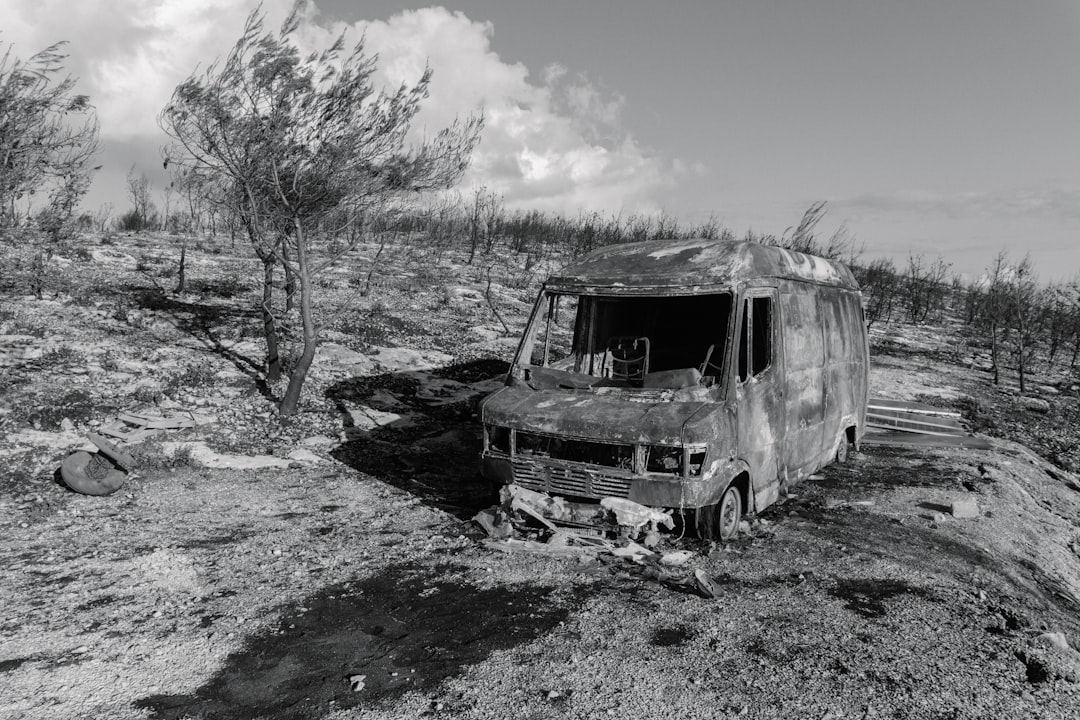The Drake Passage, a narrow body of water located between the southern tip of South America and Antarctica, is notorious for its unpredictable weather and tumultuous seas. Stretching approximately 600 miles, this passage is often regarded as one of the most dangerous maritime routes in the world. The confluence of the Atlantic and Pacific Oceans creates a unique environment where fierce winds and powerful currents collide, resulting in towering waves that can reach heights of over 30 feet.
Sailors and navigators have long feared this stretch of water, as its reputation for sudden storms and treacherous conditions has claimed numerous vessels throughout history. Navigating the Drake Passage requires not only skill but also a deep respect for the forces of nature. The passage is often characterized by its rapidly changing weather patterns, which can shift from calm to chaotic in a matter of minutes.
This unpredictability has led to countless maritime disasters, making it a focal point for researchers studying oceanic conditions and climate change. For those who dare to traverse these waters, the Drake Passage serves as a stark reminder of the power of the sea and the inherent risks involved in maritime travel.
Key Takeaways
- The Drake Passage is a dangerous stretch of water known for its treacherous conditions.
- The ill-fated ship had a brief history before encountering disaster in the Drake Passage.
- The crew and passengers on board the ship came from diverse backgrounds and had different reasons for being on the voyage.
- A sudden storm turned the situation for the worse, leading to a race against time for search and rescue efforts.
- Survivors’ accounts highlight tales of bravery and resilience in the face of the disaster.
The vessel: A brief history of the ill-fated ship
The ill-fated ship, known as the MV Ocean Explorer, had a storied history that began long before its final voyage. Built in the early 1990s, the vessel was initially designed for luxury cruises in warmer waters. Over the years, it underwent several renovations and modifications, transforming it into a vessel capable of navigating icy waters and catering to adventurous travelers seeking to explore the remote regions of Antarctica.
With a capacity for over 200 passengers and a crew of dedicated professionals, the MV Ocean Explorer was equipped with state-of-the-art technology and amenities that promised an unforgettable experience. However, despite its impressive features, the ship’s history was marred by previous incidents that raised concerns about its safety protocols. Reports of mechanical failures and navigational errors had surfaced in the years leading up to its final journey, prompting questions about the vessel’s reliability.
As it set sail for what was intended to be a routine expedition through the Drake Passage, many were unaware of the challenges that lay ahead. The ship’s legacy would soon be overshadowed by tragedy, leaving an indelible mark on maritime history.
The crew and passengers: Who were on board?

Onboard the MV Ocean Explorer were a diverse group of individuals, each with their own stories and reasons for embarking on this journey. The crew consisted of seasoned professionals, including experienced captains, navigators, and hospitality staff who were well-versed in the challenges of polar expeditions. Many had spent years working in similar environments, honing their skills in navigation and emergency response.
Their dedication to ensuring passenger safety was evident, but they were about to face an unprecedented test of their abilities. The passengers included adventure seekers from various backgrounds—families eager to create lasting memories, solo travelers seeking solitude in nature’s grandeur, and seasoned explorers with a thirst for discovery. Each person brought their own hopes and dreams aboard the ship, excited to witness the breathtaking landscapes of Antarctica.
However, as fate would have it, their shared experience would soon transform from one of exploration to a harrowing struggle for survival. The stories of these individuals would intertwine as they faced unimaginable challenges together.
The storm: A sudden turn for the worse
| Metrics | Data |
|---|---|
| Wind Speed | 120 mph |
| Rainfall | 10 inches |
| Damage | Severe |
| Duration | 3 hours |
As the MV Ocean Explorer made its way through the Drake Passage, ominous clouds began to gather on the horizon. Initially dismissed as a minor weather disturbance, the situation quickly escalated into a full-blown storm. Winds howled at speeds exceeding 70 miles per hour, and waves crashed against the hull with relentless force.
The crew sprang into action, implementing emergency protocols to secure the ship and ensure passenger safety. However, despite their best efforts, the storm proved to be more ferocious than anyone had anticipated. Within hours, the vessel was tossed about like a toy in a bathtub, leaving passengers terrified and disoriented.
The once-calm atmosphere transformed into chaos as people struggled to maintain their footing amidst the violent swells. Panic set in as announcements echoed through the ship, urging everyone to remain calm while securing themselves in their cabins. The crew worked tirelessly to stabilize the ship, but as conditions worsened, it became clear that they were facing an uphill battle against nature’s fury.
Search and rescue efforts: The race against time
In the aftermath of the storm’s devastation, search and rescue efforts commenced almost immediately. As news of the MV Ocean Explorer’s distress spread, multiple agencies mobilized resources to locate and assist those onboard. Helicopters were dispatched from nearby research stations, while ships from neighboring countries altered their courses to join the search.
Time was of the essence; every passing moment increased the urgency to find survivors amidst the wreckage. Rescue teams faced numerous challenges as they navigated treacherous waters littered with debris from the ship. The harsh weather conditions continued to pose significant risks, complicating their efforts to locate survivors.
Despite these obstacles, determination fueled their resolve as they scoured the area for any signs of life.
The world watched closely as rescue operations unfolded, united in their concern for those lost at sea.
Survivors’ accounts: Tales of bravery and resilience

Amidst the chaos and uncertainty, stories of bravery and resilience began to emerge from those who survived the ordeal aboard the MV Ocean Explorer. Passengers recounted harrowing experiences as they clung to life during the storm’s onslaught.
Strangers became allies as they banded together to support each other through fear and despair. One survivor described how she helped an elderly woman navigate through the darkened corridors of the ship as it pitched violently from side to side. Another passenger shared how he used his knowledge of first aid to assist injured individuals while waiting for rescue teams to arrive.
These accounts highlighted not only individual courage but also the power of human connection in times of crisis. As survivors began to recount their experiences, it became clear that their shared ordeal had forged bonds that would last a lifetime.
The aftermath: Dealing with the emotional and physical toll
In the wake of such a traumatic event, survivors faced an uphill battle as they grappled with both emotional and physical scars left by their experience aboard the MV Ocean Explorer. Many struggled with post-traumatic stress disorder (PTSD), haunted by memories of fear and loss that lingered long after they returned home. Support groups emerged as survivors sought solace in one another’s stories, sharing their pain while finding strength in community.
Physically, some survivors dealt with injuries sustained during the storm or while attempting to escape from danger. Rehabilitation programs were established to assist those who required medical attention or psychological support. The emotional toll extended beyond individual experiences; families were left shattered by the loss of loved ones who had perished during the disaster.
As communities rallied around survivors, it became evident that healing would take time—a journey marked by both struggle and resilience.
Investigating the cause: Understanding what went wrong
Inquiries into the events surrounding the MV Ocean Explorer’s tragic voyage began almost immediately after rescue efforts concluded. Investigators sought to piece together what had gone wrong during that fateful journey through the Drake Passage. They examined weather reports leading up to the storm, scrutinized navigation logs, and interviewed crew members to determine if any lapses in judgment or protocol contributed to the disaster.
Preliminary findings suggested that while weather conditions had been forecasted accurately, there may have been miscalculations regarding how quickly those conditions could deteriorate. Additionally, questions arose about whether adequate safety measures were in place onboard—specifically regarding emergency preparedness training for both crew and passengers. As investigators delved deeper into these issues, it became clear that understanding what went wrong would be crucial not only for accountability but also for preventing future tragedies.
Lessons learned: How can future tragedies be prevented?
The tragedy surrounding the MV Ocean Explorer served as a stark reminder of the inherent risks associated with maritime travel—particularly in treacherous waters like those found in the Drake Passage. In light of this disaster, industry experts began advocating for stricter regulations regarding vessel safety standards and emergency preparedness protocols. They emphasized that comprehensive training programs should be mandatory for all crew members operating in high-risk environments.
Furthermore, advancements in technology could play a pivotal role in enhancing safety measures at sea. Improved weather forecasting systems could provide more accurate real-time data about changing conditions, allowing vessels to alter their courses proactively when faced with impending storms. By learning from past mistakes and implementing new strategies based on these lessons learned, stakeholders aimed to create a safer maritime environment for future travelers.
Support and solidarity: The global response to the disaster
The global response to the disaster involving the MV Ocean Explorer was swift and overwhelming. Governments around the world expressed condolences while offering assistance to affected families and survivors. Fundraising campaigns emerged across social media platforms as individuals sought ways to support those impacted by this tragedy—whether through financial contributions or by raising awareness about maritime safety issues.
Organizations dedicated to disaster relief mobilized resources quickly, providing psychological support services for survivors grappling with trauma after their harrowing experiences at sea. Communities came together in solidarity—holding vigils honoring those lost while celebrating acts of heroism displayed during rescue efforts. This collective response underscored humanity’s capacity for compassion even amidst profound loss.
Moving forward: Rebuilding and honoring the memory of those lost
As time passed since that fateful day aboard the MV Ocean Explorer, efforts began not only toward rebuilding lives but also toward honoring those who had been lost at sea. Memorial services were held across various locations—each one serving as a poignant reminder of lives cut short too soon while celebrating legacies left behind by loved ones who perished during this tragedy. In addition to memorializing victims’ memories through ceremonies or tributes within communities affected by this disaster—initiatives aimed at improving maritime safety gained momentum within industry circles as stakeholders worked collaboratively toward creating safer environments for future travelers venturing into perilous waters like those found within Drake Passage.
Through resilience born from tragedy emerged hope—a commitment shared among survivors’ families alike—to ensure that lessons learned would pave pathways toward safer journeys ahead while honoring memories etched forever within hearts touched by loss along way forward together united under banner remembrance resilience strength love compassion healing hope future brighter days ahead!
The Drake Passage is notorious for its treacherous waters and unpredictable weather, often posing significant challenges to those who attempt to navigate it. A recent tragedy in this perilous region has brought renewed attention to the dangers faced by mariners. For those interested in learning more about the geographical and historical significance of the Drake Passage, an insightful article can be found on MyGeoQuest. This article delves into the unique characteristics of the passage and its impact on maritime travel. You can read more about it by visiting this page.
WATCH NOW! Drake Passage: Earth’s Deadliest Waters Revealed
FAQs
What is the Drake Passage?
The Drake Passage is the body of water between the southern tip of South America and the northern tip of the Antarctic Peninsula. It is known for its rough seas and challenging sailing conditions.
What happened in the Drake Passage tragedy?
The Drake Passage tragedy refers to a specific incident where a boat or ship encountered difficulties, leading to a tragic outcome. The details of the specific tragedy may vary, but it generally involves adverse weather conditions and the challenges of navigating the Drake Passage.
What are the common risks associated with the Drake Passage?
The Drake Passage is known for its strong winds, large waves, and unpredictable weather patterns. These conditions can make sailing through the passage hazardous, especially for smaller vessels.
How common are tragedies in the Drake Passage?
Tragedies in the Drake Passage are relatively rare, but the challenging conditions of the passage mean that there is always a risk of accidents or mishaps for vessels attempting to navigate through it.
What safety measures are in place for vessels traveling through the Drake Passage?
Vessels traveling through the Drake Passage are typically well-equipped and prepared to handle the challenging conditions. This may include experienced crew members, sturdy vessels, and adherence to safety protocols and weather monitoring.
